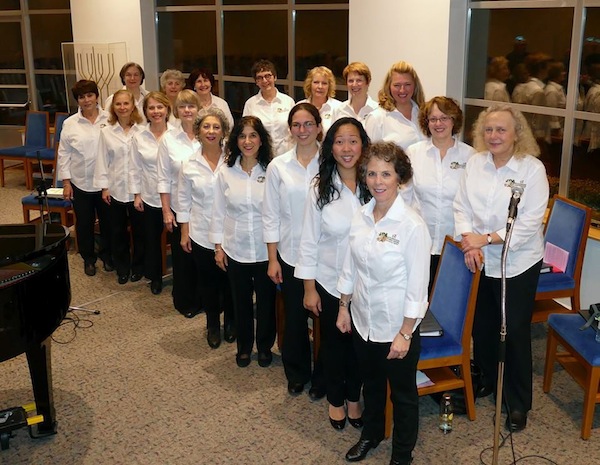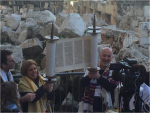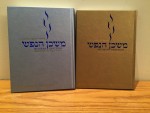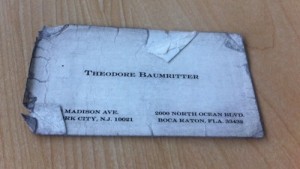Shabbat, Nov. 23
Chayei Sarah, Genesis 23:1-25:18
Haftarah, I Kings 1:1-31
I am an American citizen living in Vancouver, B.C., and serving a Reform congregation for the past six years. This juxtaposition of two increasingly disparate identities has given me a unique perspective on this week’s parashah, Chayei Sarah, and its introduction of the term ger toshav, resident alien.
In Chayei Sarah, we read the rather peculiar line, “Ger v’toshav anochi imachem” – “I am a resident alien [foreigner] living for a time among you; sell me a gravesite among you, that I may bury my dead here.” (Genesis 23:4) This is what Abraham says as he petitions the owner of a field for the right to purchase land for a gravesite for his wife Sarah.
To both the student of Torah and the student of the English language, this phrase, ger v’toshav, resident alien, piques interest and draws attention. It is an example of one of those delightful and often poignant turns of a phrase in any language, an oxymoron – the bringing together of two seemingly incompatible and opposite terms, like sweet sorrow, recorded live, act naturally, good grief, passive aggressive and, though not kosher, but still illustrative, jumbo shrimp.
I have always enjoyed how this literary device can be used to construct biting commentary on the incongruity of frequently paired things. That commentary can have a powerful effect, causing a moment of silence to hover over a room as we contemplate the phrase’s meaning. We recognize this when we dwell on the underlining message of ger v’toshav, resident alien. The oxymoron challenges us to see compatibility – even harmony – in seemingly incompatible things.
So, what is a ger v’toshav, a resident alien? In our Torah portion, and in Jewish legal texts that have followed, a ger v’toshav was an individual of special status in the community, one who lived permanently among the citizens of a place but did not have the status of a citizen. A ger toshav enjoyed all the protections a society offered its citizens but was exempt by virtue of his (it was not gender inclusive back then) special status from many of the requirements of citizenship. A ger toshav was a protected visitor and honoured guest in a society. Central to this was the public obligation for the health and welfare of a ger toshav. This was the sacred responsibility of each citizen in that society and of the society as a whole.
Jewish law is emphatic about our responsibility to the stranger who lives within our midst. Thirty-six times in Torah we are commanded to “love the stranger.” Every year at Passover, this theme serves as the narrative thread of the seder. At the very centre of the Torah, in the Holiness Code, we read, “The strangers who reside with you shall be to you as your citizens; you shall love each one as yourself, for you were strangers in the land of Egypt.” (Leviticus 19:34)
In this week’s parashah, Abraham, the emissary of Judaism to the world, the individual whose merit and relationship with God, above all others, is the reason we were given the Torah, is presented not as a powerful, wealthy businessman or as a man who regularly talks with God. Instead, he is presented as a helpless stranger in a land that he now calls home, seeking aid and assistance from its citizenship.
The text is both graphic and poignant. His dead wife literally lays at his feet, he owns nothing in this land and he asks to purchase a place so he may bury her. He does not seek a handout; he is willing to pay a fair price for the land, but wants permission to do so. And the Hittites who owned the land sell him a burial plot, breaking with their tradition, breaking the law against allowing aliens, even resident aliens, from owning land. (See Manfred R. Lehmann, “Abraham’s Purchase of Machpelah and Hittite Law,” Bulletin of the American Schools of Oriental Research, February 1953.) They sell him the land because they see themselves in his shoes; they imagine their own dead lying at their feet and they make a new law – and they help.
We hear the echo of this story in our own times, at borders north and south, east and west of wherever we are. How do we treat the strangers who show up in our land? Are they to be feared, incarcerated and ostracized? Or are they to be allowed some comfort, as our forefather Abraham was in his hour of great sorrow and despair?
When we are reminded of the kindness shown to our ancestors, when we are reminded that it was also a kindness shown to us, because we too were once strangers in the land, then the solution Judaism demands of us is obvious no matter the challenges. We must care for those who cross freeways, deserts, oceans and mountain ranges to get here, just as (or better than) our nations cared for our parents and grandparents as they were running for their lives. We must reach out to the strangers in our midst, to the resident aliens who live and work here, but for whom economic, social, medical and educational systems have no place. Torah commands us to make a place.
As is our tradition, when Abraham buried Sarah, he placed a stone on her grave as a sign to all who would see it: a sign with its own double meaning, like an oxymoron. The stone signified that beneath this ground lay Sarah, the wife of Abraham, the mother of Isaac. But it also said that this ground, this portion, belonged to Abraham, a resident alien in the land of the Hittites, who purchased this land though he had no legal claim to it. The stone is a sign for all times, a symbol of the kindness and sense of responsibility shown by the Hittites to the ger toshav, the resident alien, the stranger in their land, and a symbol of the universality of human life.
We all mourn our dead. Every person’s life has meaning, even if he or she speaks a different language than ours, comes from a different country, is a member of a different tribe. When we fail to act to heed this mitzvah, our Torah is clearly misunderstood.
Rabbi Dan Moskovitz is senior rabbi at Temple Sholom and author of The Men’s Seder (MRJ Publishing). He is also chair of the Reform Rabbis of Canada. His writing and perspective on Judaism appear in major print and digital media internationally. This article originally appeared on reformjudaism.org.


 There have been almost 30 presidents of the Sisterhood, with the late Jan Pollack having been the founder and Reesa Devlin the current president.
There have been almost 30 presidents of the Sisterhood, with the late Jan Pollack having been the founder and Reesa Devlin the current president.



